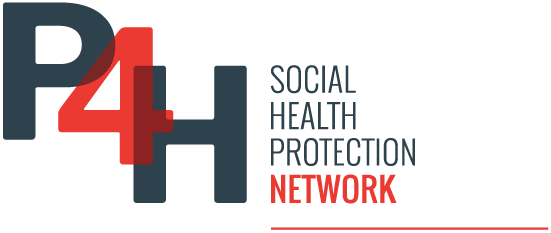The number of documents available on the P4H Network’s digital platform reflects the network’s scope of work. The majority of documents are primary source materials created by country nationals or resources produced by organizations working in social health protection (SHP) and/or health financing (HF).
A “Diagonal” Approach to Integrating Nutrition into Health Systems: Opportunities, Challenges, and the Way Forward
This post was first published by the Center for Global Development on 19 November, 2024. Despite decades of global efforts, nutrition remains underprioritized, siloed, and poorly integrated within health systems and universal health coverage (UHC) efforts. This...
Health and social action sector policy letter 2025-2029 – Senegal
In 2025, Senegal's Ministry of Health and Social Action (MSAS) has developed a health sector policy letter in a participatory and inclusive manner, involving all key players in the sector, under the supervision of the Ministry of the Economy, Planning and Cooperation...
Niger’s Investment Case for Reproductive, Maternal, Newborn, Child and Adolescent Health and Nutrition 2022-2026
The Government of Niger and the Ministry of Public Health, Population and Social Affairs have developed their investment case for Reproductive, Maternal, Newborn, Child and Adolescent Health and Nutrition with the support of the Global Financing Facility. This...
Sustainability starts with spending: public financial management lessons from Kenya’s universal health care pilot
The study “Sustainability starts with spending: public financial management lessons from Kenya’s universal health care pilot” by Alex Olateju Adjagba, James Odhiambo Oguta, Catherine Akoth, Solomon Kimutai Toweet, Peter Okoth, and Debra Jackson, published in BMC...
Senegal Health Compact 2025 – Towards Universal Health Coverage
This document, published in 2025, materializes the moral, ethical and economic commitment between the government and its development partners, to effectively support the implementation of health and Universal Health Coverage policies.
Sustainability starts with spending: public financial management lessons from Kenya’s universal health care pilot
This study explored how public financial management (PFM) processes influenced the implementation of Kenya’s 2019 Universal Health Coverage (UHC) pilot in four counties through qualitative interviews and focus group discussions. Findings revealed that while a hybrid...
July 14, 1994 – Law on coordinated compulsory health and indemnity insurance from July 14, 1994
The Coordinated Compulsory Health Care Insurance Act was published in Belgium in July 1994. It is the annex to the Royal Decree of July 14, 1994 coordinating the law on compulsory health care insurance in Belgium, and constitutes the basic text organizing compulsory...
The Future of Health Financing in Africa: The Role of Health Taxes
Health taxes on products like tobacco, alcohol, and sugary drinks are a highly effective yet underused tool in Africa for reducing disease and premature death, while simultaneously generating domestic revenue. These taxes can help governments save lives, lessen...
Catastrophic health expenditure and household impoverishment in Togo
This peer review journal article published in 2023 analyses catastrophic health expenditures and effects on household impoverishment in Togo. Since 2015, Togo has been committed to working towards ensuring access to quality health care without its citizens incurring...
Providing financial protection in health for low-income populations: a comparison of health financing designs in East Asia
This study compared health financing schemes for low-income populations across six East Asian societies, analyzing eligibility, coverage, and benefits. Results showed Taiwan, Hong Kong, and South Korea provide stronger financial protection, while mainland China lags...
Less is more: consumers’ preferences for value-based insurance design in Switzerland
This study used a discrete choice experiment in Switzerland to examine consumer preferences for value-based insurance design (VBID). Findings showed a strong status quo bias and resistance to higher cost-sharing or limiting low-value care, with preferences varying by...
Challenging inadequate and fragmented primary health care financing: findings from Bangladesh, Indonesia, Maldives, and Nepal
Strengthening primary health care (PHC) is crucial for universal health coverage in South-East Asia, but sustainable public financing remains a challenge in Bangladesh, Indonesia, Maldives, and Nepal. This study, based on extensive document review and interviews,...
Financial toxicity of hemophilia care in Southeast Asian countries
In their recent Viewpoint published in The Lancet Regional Health – Southeast Asia, authors Jose Marco Antonio II, Stephanie Wang, Frederic Ivan L. Ting, Jeremiah R. Vallente, Edward Christopher Dee, and Erin Jay G. Feliciano examine the pressing issue of financial...
Strategies for improving migrant health in Iran: a realist review
This realist review of 67 studies identified 27 strategies to enhance migrant health in Iran, focusing on trust-building through intersectoral governance, inclusive insurance to reduce financial barriers, cultural competency to improve accessibility, and community or...
Public Vs. Private Health Insurance in Germany
In Germany, every resident must have health insurance, choosing between public statutory insurance, which is income-based, covers essential care, and includes dependents at no extra cost, or private insurance, which offers modular plans with potentially faster access...
